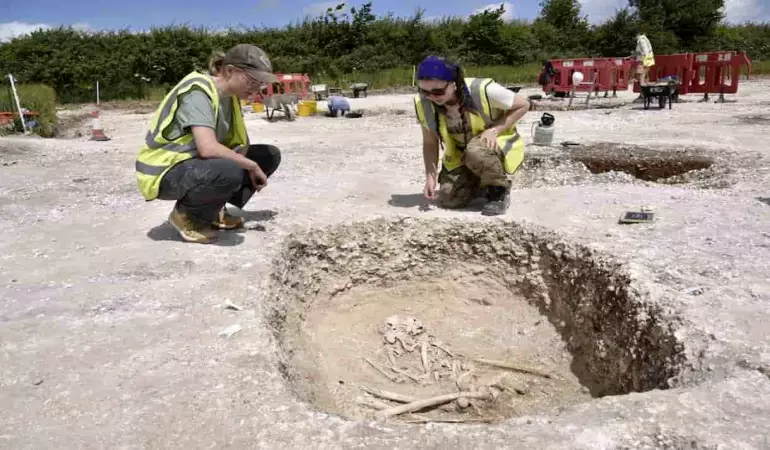Stunning discoveries about the secrets of Iron Age women in England revealed
New analysis shows that women's family ties were at the heart of social networks in British Celtic society before the Roman invasion.
January 16, 2025 18:16
Genetic studies from Late Iron Age cemeteries have revealed that Celtic women were closely related by inbreeding. In contrast, unrelated men tended to come to the communities from elsewhere. Most likely after marriage.
Researchers examined ancient DNA from 57 graves in Dorset, south-west England, and found that two-thirds of the individuals were descended from the same mother. The cemeteries were in use from around 100 BC to 200 AD.
"This is truly astonishing - this has never been recorded in European prehistory," said study co-author Lara Cassidy, a geneticist at Trinity College Dublin.
The results of this study suggest that women lived in the same circle throughout their lives - socially interacting with each other and possibly inheriting or owning land and property.
In contrast, men in this society were dependent on their wives' families for their land and maintenance.
Historically, such a role for women has been rare
This model of society, known as matrilocal - where men join their wives' families - is historically rare.
Archaeologists studying graves in Britain and Europe have found the opposite pattern in other ancient periods, from the Neolithic to the early Middle Ages. That is, women would leave their homes and join their husbands' family group.
In studies of pre-industrial societies from around 1800 to the present day, anthropologists have found that men join their wives' extended family households only 8% of the time
But archaeologists knew that the role of women in Iron Age Britain was special.
By AD 43, graves in England had found valuable objects buried with Celtic women. Meanwhile, Roman writers, including Julius Caesar, wrote disparagingly of their relative independence and fighting prowess.
This is not to say that there was a matriarchy
The pattern of strong female kinship ties identified by researchers does not necessarily mean that women also held formal positions of political power, known as matriarchy.
However, it does suggest that women had some control over land and property, as well as strong social support, making British Celtic society more egalitarian than the Roman world.




